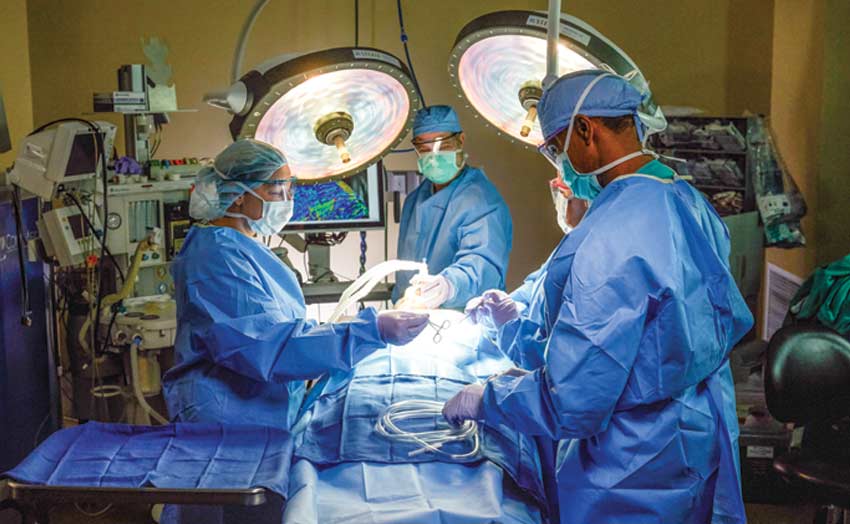
Surgical Procedures
St. Elizabeth Hospital offers surgeries and procedures in a number of different specialties including general surgery, orthopedics, urology, plastics, and bariatrics.
General Surgery
- Laparoscopic Cholecystectomy (gall bladder removal)
- Hernia Repair
- Breast Biopsy
- Lumpectomy
- Mastectomy
- Cyst Removal
- Diagnostic Laparoscopy
- Lipoma Removal
- Mediport Insertion
- Thyroidectomy
- Colon Resection
- Laparoscopic Nissen Fundoplication
- Thoracoscopy
- Adrenalectomy
Bariatrics (Weight Loss)
- Vertical Sleeve Gastrectomy
- Roux-en-y Lap Adjustable Gastric Band (Lap Band)
ENT
- Tonsillectomy/Adenoidectomy
- Myringotomy
- Sinus Surgery
Gastroenterology
- Colonoscopy EGD (examination of the linings of the esophagus, stomach, and upper duodenum using a small camera)
- ERCP (a procedure used to identify stones, tumors, or narrowing of the bile ducts)
Orthopedics
- Carpal Tunnel Release
- Knee Arthroscopy
- Total Knee Replacement
- Total Hip Replacement
- Shoulder Arthroscopy
- ACL Reconstruction
- Trigger Finger Release
Pain Management
- Epidural Steroid Injection
- Cervical Steroid Injection
- Percutaneous Disc Decompression
- Joint Injections
- Sympathetic Nerve Block
Plastics
- Breast Reduction
- Breast Augmentation
- Blepharoplasty (eyelid surgery)
- Liposuction
- Scar Revision
- Tummy Tuck
Podiatry
- Bunion Removal
- Arthrodesis (surgical fusion of a joint for pain relief)
Urology
- Cystoscopy Lithotripsy (a non-invasive procedure which uses shock waves to break up kidney stones)
- Hydrocele Repair
- Urteroscopy
- Meatomy
- TURP (removal of the prostate)
What is…
Arthroscopic Surgery: procedure in which a joint (for example, the knee) is viewed using a small camera while other surgical instruments are inserted into the joint through small incisions and used to repair the joint or body part.
Cystoscopy: a procedure which allows a surgeon to view the inside of the urethra and bladder by using a thin, lighted instrument called a cystoscope. Surgical instruments can also be inserted through the cystoscope to take tissue samples, to remove foreign objects, or to place stents to allow the free flow of urine from the bladder.
Laparoscopy: surgery performed using a laparoscope in which a lighted instrument with a small camera attached is inserted into a small incision to view the part of the body which is being treated. Other small incisions are made to insert surgical instruments which are then used to repair or remove internal organs. Nearly all organs in the body are accessible through the laparoscope and many surgeries including weight loss surgery, bladder and gynecological surgery, appendectomy, hernia repair, prostate surgery, surgeries of the kidney and the lung, just to name a few.
Endoscopy: procedures or surgeries used to diagnosis and treat using an instrument called an endoscope inserted through natural openings in the body. Endoscopy is commonly used for diagnosis and treatment of the upper and lower colon, rectum, stomach, esophagus and other organs.
